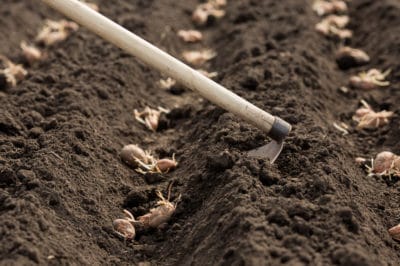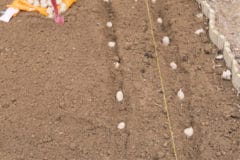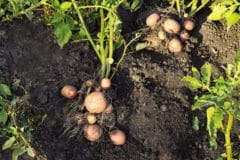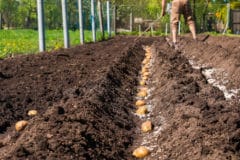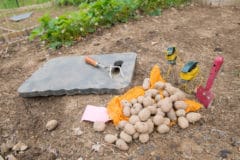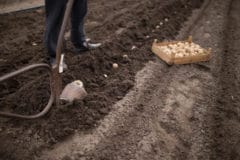Get Ready
Before you start planning, or even prepping your garden, you’ll want to select the seed potatoes you want. While you can simply buy organic potatoes and let them go to seed, this does increase the chance of carrying various diseases into your garden.
Seed potatoes from a catalog, garden store, or other dealer is more expensive, but the seeders are usually certified disease free. You can also plant seed potatoes from your own previous crop, as long as you’re certain they are free of potato diseases.
Get More Ready
Once you know what you’re planting, select a sunny place to plant it. Sunshine and warmth are vital to the growth of potatoes. Ground that is too cold and wet, or too warm too soon, will adversely affect your crop, so you want to pick the best time to plant.
Most gardeners will want to plant their potatoes after the last hard frost of winter or early spring, but while light frost still occurs from time to time. Chitting, or pre-sprouting, your seed potatoes may be helpful if you live in an area where the weather warms up earlier in the year.
Dig In
Dig a trench – as long as you like – about three to four inches deep. While it wasn’t necessary to fertilize your soil prior to this point, you can now add compost and some bone meal or super-phosphate to your trench. Sprinkle your chosen fertilizers into the trench, about one handful per foot.
Situate Your Spuds
Place your seed potatoes – whole or in segments – into your trench. They should be about two feet (61 cm) apart. Cover the potatoes with two to three inches of dirt, and water. That’s really all there is to it!
A Note About Frost
If your plants begin to emerge from the ground while it’s still cold outside, frost may kill the leaves. This is not cause for alarm, as this will not damage the plant underground. Your potatoes will still grow, despite the loss of their leaves, which will likely return.
